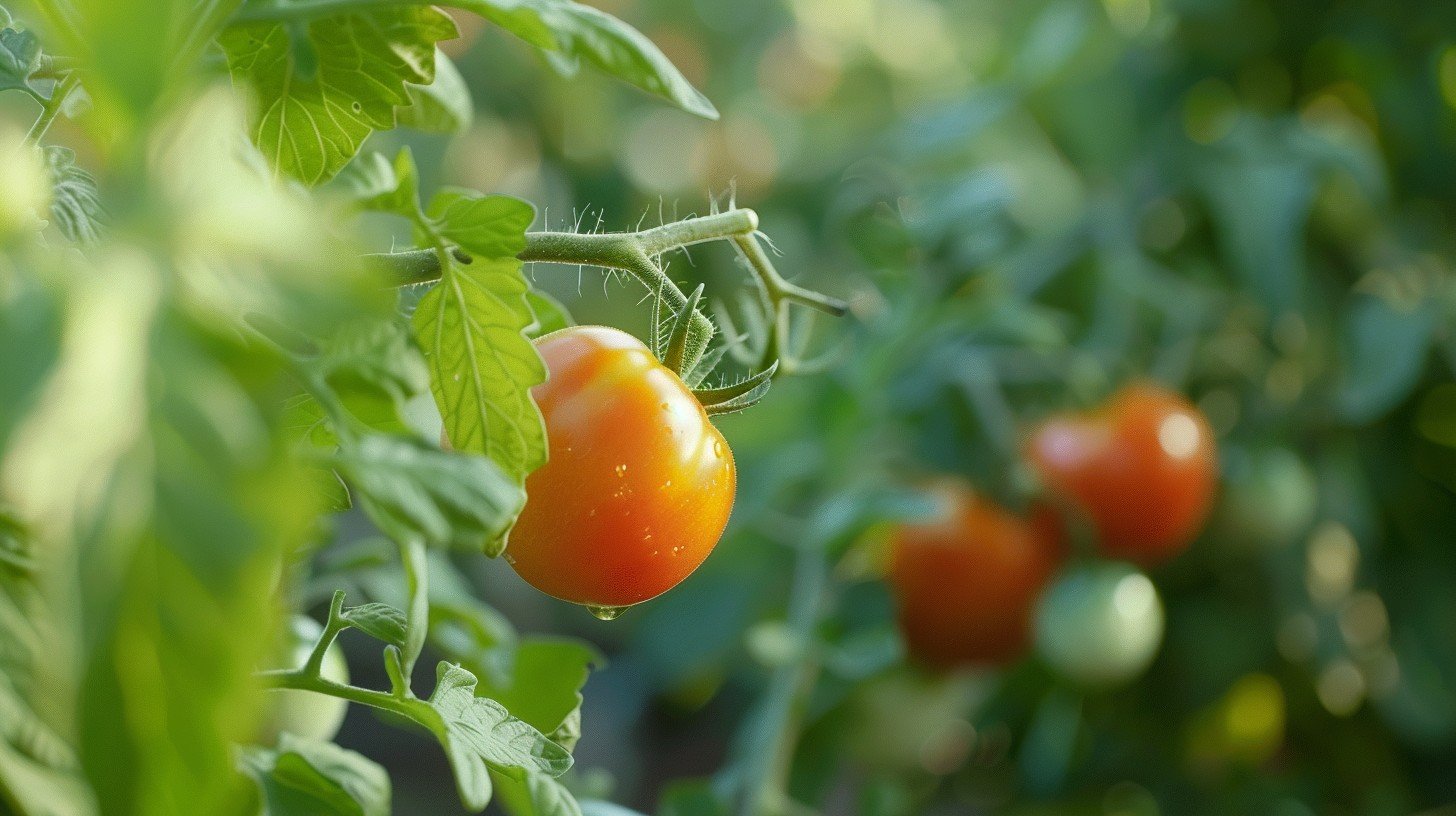Gardening is a rewarding journey, but every vegetable grower knows that pests can turn a lush garden into a battleground overnight. If you’ve ever planted tomatoes only to find them riddled with holes or watched your leafy greens disappear overnight, you know the frustration! The good news? You don’t need harsh chemicals to protect your crops. There are plenty of natural pest control methods for vegetable gardens that keep both your plants and the environment healthy.
In this in-depth guide, you’ll learn the secrets to managing pests the eco-friendly way. Whether you’re growing tomatoes, cucumbers, or salad greens, these time-tested techniques will help you grow a vibrant, thriving vegetable garden — all while keeping your harvest chemical-free.
Why Choose Natural Pest Control?
Chemical pesticides may seem like a quick fix, but they can harm much more than just pests. Overuse can lead to soil degradation, harm beneficial insects, and introduce toxins into your food supply. With natural pest control, you encourage a balanced ecosystem in your garden, making it safer for children, pets, and pollinators like bees and butterflies. Plus, crops grown without synthetic chemicals taste better and are healthier for you and your family.
Understanding Your Garden Ecosystem
Before diving into specific techniques, it’s important to recognize that every garden is its own mini-ecosystem. An imbalance—like too many pests and not enough predators—leads to trouble. By focusing on natural methods, you work with nature instead of against it, creating resilience against outbreaks and greater biodiversity.
Top Natural Pest Control Methods for Vegetable Gardens
1. Companion Planting: Friends in the Garden
Certain plants naturally repel pests or attract beneficial insects that keep harmful bugs in check. This ancient practice, known as companion planting, can work wonders in maintaining pest-free garden beds.
- Marigolds: These cheerful flowers deter nematodes, aphids, and beetles.
- Basil and tomatoes: Basil wards off whiteflies and tomato hornworms, making them excellent neighbors.
- Onions and carrots: Onions help repel carrot flies, while carrots deter onion flies.
Planting a mix of vegetables, herbs, and flowers together creates diversity, making it harder for pest populations to explode.
2. Attracting Beneficial Insects
Not all bugs are bad! Ladybugs, lacewings, praying mantises, and bees are your silent soldiers, feeding on pests or pollinating your crops. To invite them into your garden, grow nectar-rich flowers like dill, fennel, yarrow, and cosmos near your vegetables.
- Ladybugs munch on soft-bodied aphids.
- Lacewings target caterpillars and thrips.
- Bees and other pollinators boost garden productivity.
Avoid using broad-spectrum pesticides—these harm beneficial insects as much as the pests you’re targeting.
3. Physical Barriers: Defend Your Plants
Simple barriers can keep many pests at bay without chemicals.
- Row covers: Lightweight fabric laid over crops protects them from flying insects and caterpillars while allowing sunlight and rain through.
- Copper tape or collars: These deter slugs and snails, especially important for leafy greens.
- Netting: Use insect netting to shield vulnerable seedlings from beetles, cabbage worms, and moths.
Place barriers at the first sign of pests for best results.
4. Homemade Organic Sprays
When pests persist, homemade organic sprays are effective and safe.
- Neem oil spray: Acts as an insect repellent and disrupts pests’ life cycles. Mix a few teaspoons of neem oil with mild liquid soap and water. Spray directly on affected plants.
- Garlic and chili spray: Blend garlic and hot chili peppers with water, strain, and use as a deterrent for aphids, whiteflies, and beetles.
- Soap spray: Mix a teaspoon of mild liquid soap in a liter of water to control soft-bodied insects like aphids and spider mites.
Always test sprays on a small leaf patch to make sure it doesn’t harm your plants.
5. Manual Controls: When in Doubt, Pick Them Out
Never underestimate the power of your own two hands. Handpicking caterpillars, beetles, or slugs early in the morning or late in the evening is highly effective, especially for small or urban gardens. Drop offenders into a bucket of soapy water to ensure they don’t return.
6. Mulching and Soil Health
Healthy, resilient plants are less vulnerable to pest attacks.
- Mulch: Add straw, grass clippings, or leaf mulch around plants to disrupt pest life cycles and retain soil moisture.
- Compost: Feed soil with homemade compost to support strong roots and healthy growth, making plants more resistant to pests.
- Crop rotation: Each year, move vegetable families to different beds to avoid allowing soil-borne pests to establish.
7. Natural Predators and Biological Controls
Sometimes, introducing natural enemies is the best way to restore balance.
- Nematodes: Beneficial nematodes in the soil control beetle grubs and root-eating insects.
- Bacillus thuringiensis (Bt): This natural bacterium is effective against caterpillar pests and is harmless to humans, pets, and beneficial insects.
Use these methods judiciously, targeting only the problem pests.
8. Healthy Gardening Practices
Prevention is always better than cure! Keep your garden in peak health with these practices:
- Water early in the day: Reduces fungal diseases and discourages slugs and snails.
- Remove diseased plants: Promptly pull and dispose of sick or heavily infested plants.
- Clean up debris: Clear away weeds, fallen leaves, and plant remains where pests can hide.
Regular inspection makes it easier to catch problems before they spread.
Pest-Specific Natural Remedies
Some pests require extra attention. Here’s how to handle the most common vegetable garden invaders, naturally:
- Aphids: Blast with water, attract ladybugs, or use a soap spray.
- Cabbage worms: Cover crops with row covers and handpick eggs and worms.
- Squash bugs: Plant nasturtiums nearby and check leaves often for clusters of eggs.
- Slugs and snails: Beer traps, copper barriers, and removing sheltering debris minimize damage.
Common Myths About Natural Pest Control
- “Natural means less effective.” In reality, consistent use of eco-friendly methods leads to healthier, more resilient gardens over time.
- “You need expensive solutions.” Many natural controls (like handpicking, companion planting, and homemade sprays) are affordable or free.
- “You’ll have more pests.” With diverse plantings, good soil, and beneficial insects, pest outbreaks actually become rare.
Success Stories: Natural Pest Control in Real Gardens
Home gardeners worldwide have embraced natural methods with outstanding results. For example, using companion planting in raised beds can reduce aphid and hornworm attacks by more than half. Regular mulching and attracting ladybugs minimize the need for any spray at all. With experience, you’ll find the right mix of techniques that work best for your own vegetable garden.
Conclusion: Grow More, Worry Less
Switching to natural pest control for your vegetable garden isn’t just good for your plants—it’s better for the planet, your family, and your community. By using these simple strategies, you’ll enjoy a vibrant, bountiful harvest and the satisfaction of knowing your garden is truly “green” in every sense of the word.
Take the plunge: experiment with companion planting, invite more good bugs, and keep a watchful eye on your plants. Nature has given us everything we need to protect our crops—responsibly and effectively.
Ready to create a healthier, more abundant vegetable garden? Start implementing one new natural pest control method today and watch your garden thrive! Share your experiences in the comments and inspire others to go green.






